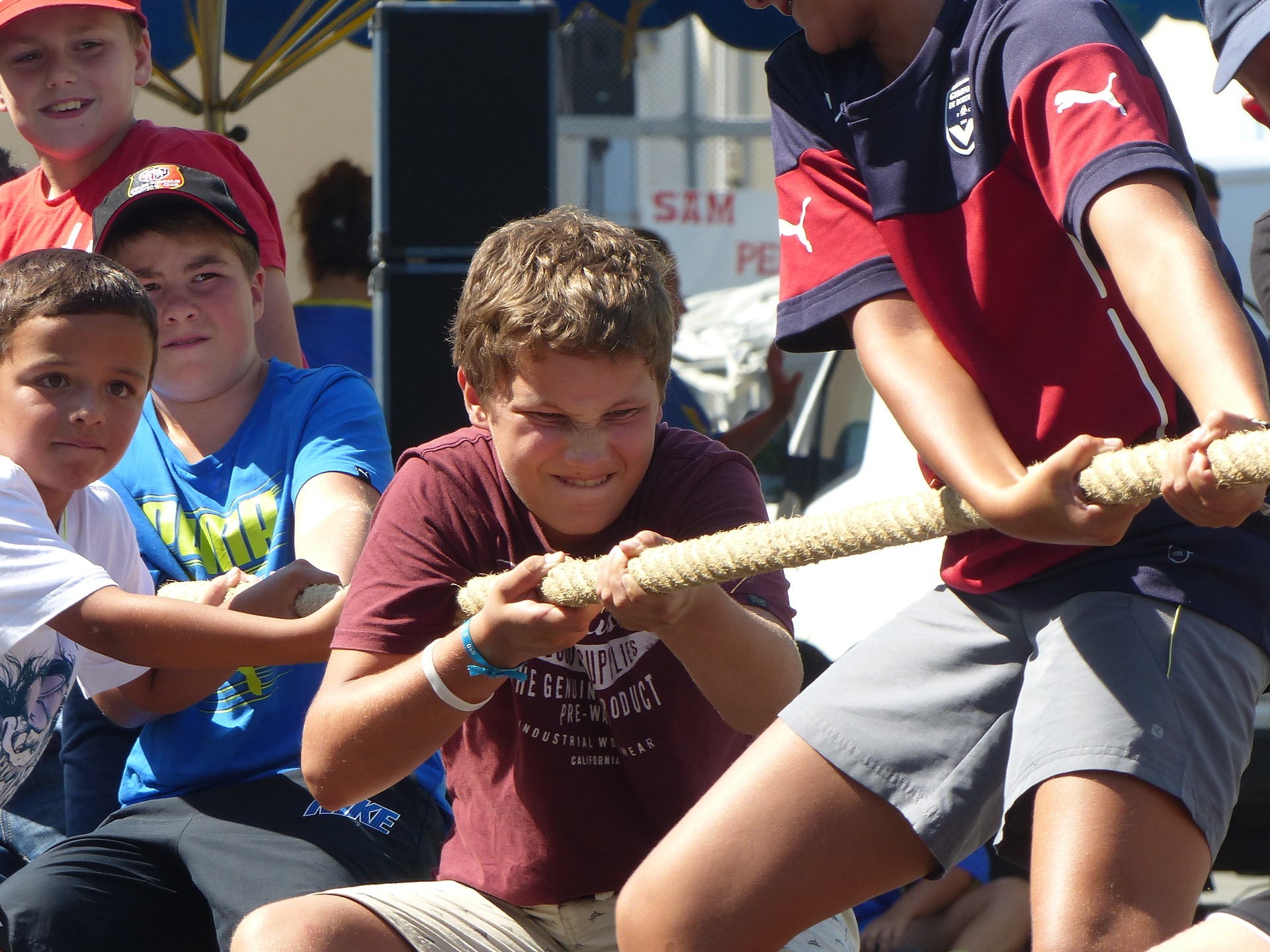Sherif et al (1954)
 Sherif et al (1954) investigated the role of social identity in conflict. You can use this study for the following content in the sociocultural approach:
Sherif et al (1954) investigated the role of social identity in conflict. You can use this study for the following content in the sociocultural approach:
Ethical considerations related to research in the socio-cultural approach.
Social Identity Theory.
You can also use it for the human relationships option:
Cooperation and competition.
Origins of conflict and conflict resolution.
The original study is available here.
Before reading the material below, please watch the following short video on the Robbers' Cave study.
Sherif set out to study whether conflict between groups could be diminished if they worked together on a superordinate goal. Superordinate goals are defined as goals that are achieved by the contribution and co-operation of two or more people, with individual goals that are normally in opposition to each other, working together.
The aim of the study was to study informal groups and observe the natural and spontaneous development of group organization, attitudes (prejudice) and group norms. The study also tested "Realistic conflict theory" which is based on the assumption that groups interacting with each other generate attitudes towards each other. The theory predicts that
- Groups that are positively independent - that is, they work toward common goals - will have good intergroup relations.
- Groups that are negatively independent - that is, they are in competition for scarce resources - will create conflict and ethnocentric attitudes.
The participants of the first experiment were 22 boys, aged 11-12. They were matched so that they were all healthy, socially well adjusted, somewhat above average intelligence and from stable, White, Protestant, middle-class homes. None of the boys knew each other before the study. Before the experiment began, the boys were randomly allocated to one of two groups.
The researchers organized a regular summer camp in the Robbers Cave State Park in Oklahoma with camp staff so that the boys did not know that they were taking part in an experiment. This was done to guarantee the ecological validity of the research. The researchers collected data by making written records of the observed behaviour, as well as sometimes using cameras and microphones.
At the camp the groups were kept separate from each other and played did a lot of activities with the goal of helping the group bond and create an identity. The boys chose names for their groups, The Eagles and The Rattlers. They stenciled their team name onto shirts and flags.
After group identities were established, the researchers the introduced conflict through games. Situations were also created so that one group benefited at the expense of the other. For example, one group was delayed getting to a picnic and when they arrived the other group had eaten their food.
The games started well but the boys soon called each other names such as "stinkers" and "cheaters". In this stage solidarity increased within each group and they showed hostility towards the other group such as stealing the other group's flag and setting fire to it. This confirmed that conflict and negative attitudes between groups can arise from group identity and fighting for resources.
During a two-day cooling off period, the boys were asked to list features of the two groups. The boys tended to characterize their own in-group in very favorable terms, and the other out-group in very unfavorable terms.
The researchers wanted to bring the conflict between the groups to a stop. Initial attempts to reconcile the groups were not successful so they developed another hypothesis that working together to reach a common goal would encourage a positive relationship between the groups. In other words, when the clear division of "us" and "them" would disappear, so would the conflict between the groups. They created a series of situations such as making the camp truck break down during an outing; the boys had to cooperate to pull the truck. The introduction of these super-ordinate goals eased the tension between the groups. This resulted in less negative ratings of the other group and there was no longer any intergroup hostility.
The study revealed one of the ways that intergroup conflict and negative intergroup attitudes may emerge. The study has been used to explain how racial prejudice and discrimination may arise between ethnic groups as a result of competition for resources.
The study was a field experiment. As a result, the study was not artificial and had a high degree of ecological validity. However, because it was a field experiment, the researchers could not control extraneous variables; for example, behaviours of the leaders or private conversations between the boys.
It is also questionable how the dependent variable was measured. The researchers used self-reports in order to measure the level of hostility after the boys had worked together to solve a problem - that is, in response to superordinate goals. However, in measuring the level of hostility after the superordinate goals, the results could be due to demand characteristics.
There are ethical concerns about the use of deception in this study. In addition, participants were not protected from physical and psychological harm. Sherif’s team note symptoms of anxiety among some of the boys, including bedwetting, running away and homesickness.
The conflicts that exist among young children may not reflect real life conflicts. This may be an over-simplified theory of the origins of ethnic, national or regional conflict.
It is difficult to generalize the findings as the sample was made up of 12-year-old boys from a single culture and a particular socioeconomic class. There is clear sampling bias in the study.

 IB Docs (2) Team
IB Docs (2) Team
